- today
- perm_identity Rastamax
- label Technical
- favorite 3 likes
- remove_red_eye 27219 views
- comment 0 comments

Introduction
Presentation of Blumat Tropf systems
Blumat Tropf systems are innovative solutions that transform the way we irrigate our plants. By providing precise control of soil moisture, these sensors revolutionize watering, ensuring your plants receive exactly the right amount of water they need, at the right time. In this advanced article, dive into the mechanics of Blumat sensors and explore their advanced applications. Learn how to fine-tune settings to meet the specific needs of your plants. Learn how to maximize the efficiency of your Blumat system and avoid common mistakes with our practical tips. Whether you're a novice or experienced gardener, this tutorial will help you master the art of precise irrigation and make your crops thrive like never before.

How Blumat sensors work
The operation of these sensors is surprisingly simple but effective and is explained in a single image here:

Blumat Tropf sensors work by using the natural ability of plants to absorb water through their roots. Each sensor consists of a porous clay tip that is inserted into the soil near the plant's roots. When the ground becomes dry, the clay tip absorbs water from the reservoir connected to the system. This absorption causes negative pressure inside the sensor, causing the sensor valve to open and allow irrigation water to flow into the soil. Once the soil returns to its optimal moisture, the clay tip stops absorbing water and the sensor's internal pressure returns to normal, closing the valve and stopping the flow of water. Thus, Blumat Tropf sensors automatically adjust watering according to the actual water needs of the plants, ensuring precise and efficient hydration.
Adjusting Blumat sensors
Importance of fine tuning
Precise adjustment of Blumat Tropf sensors is essential to ensure that plants receive the right amount of water they need, neither too much nor too little. This prevents over or under irrigation, which can lead to problems such as root rot or plant wilting. By correctly adjusting Blumat sensors, you can maximize irrigation efficiency, distributing water where it is needed, which reduces waste and promotes efficient use of resources. Additionally, precise adjustment allows watering to be adapted to changing conditions, such as seasonal variations, fluctuating temperatures and exposure to sunlight. So, by finely adjusting Blumat sensors, you can provide optimal hydration to plants, promoting their health and growth while avoiding problems associated with inadequate irrigation.< /p>
“Classic” gravity vs pressure adjustment method
 </p >
</p >
Advanced use of Blumat systems
Adaptation to different pot sizes (Maximum overload)
Due to its dimensions and physical properties, Blumat sensors are suitable for use in pots with a depth of max 30 cm. From a substrate depth of 25cm it is recommended to use the Tropf Maxi model which will allow deeper detection of the humidity level. Thus the root system will develop over the entire depth of the pot.
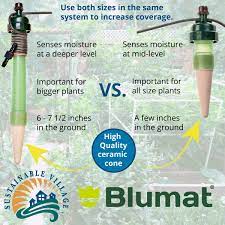
For large pots it is possible to move the dripping point of the sensor a few extra centimeters but it is preferable not to exceed 12cm distance. It is also possible to add a second sensor (a maxi and a normal is a good combination) to increase the surface covered. An additional dripper kit is also available, it allows you to extend the dripping points up to5 locations on the surface of the pot by being connected to a single sensor.
By positioning your sensors optimally you will ensure homogeneous distribution of humidity in the volume of the pot, which will give the best chance for root development and ensure a promising crop .
Adaptation to different types of substrates
Different substrate means different culture. Indeed it is imperative to adapt your irrigation strategy to the substrate used, and if the Blumat system takes care of a large part of the work it is up to you to adapt your setting as best as possible. To do this, it may be recommended to use the Blumat digital blood pressure monitor. This will give you the opportunity to check the humidity level expressed in mBar at the heart of the rootball.
|
|
|
Depending on the nature of the substrate used, the following values represent an optimal one:
- potting soil: 50-120
- coconut: 80-110
- clay balls: 40-70
- open ground: 150-250
Adaptation to rooting rate and life stage
If the novice user may prefer manual watering at the start of the cycle, it is entirely possible to carry out all the steps using the Blumat system. To do this, you simply need to adapt your precise setting to the life stage of your crop. In fact, at each stage its optimal humidity level, and therefore at each stage its adjustment adaptation. The values given below are indicative for growing in potting soil and may differ depending on the case.
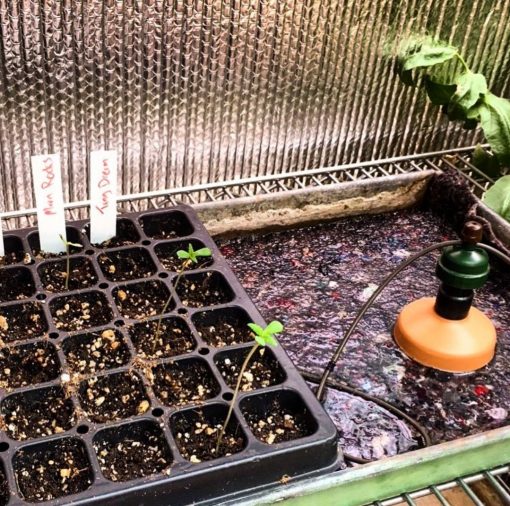 It will be noted in particular that for the rooting of young seedlings, seedlings, and cuttings, it is necessary to start with a very humid substrate first (this among other things to carry out the adjustment) which will be left to dry a little gradually by first aiming for a window of 50-100 then after a few days of 75-150. With such values the plant seeks water and produces more roots in order to find it, which accelerates rooting. For the system to oscillate correctly between the two optimal window values you may need to modify the distance between the dripping point and the sensor, which is why it may be useful to favor pots slightly larger than usual .
It will be noted in particular that for the rooting of young seedlings, seedlings, and cuttings, it is necessary to start with a very humid substrate first (this among other things to carry out the adjustment) which will be left to dry a little gradually by first aiming for a window of 50-100 then after a few days of 75-150. With such values the plant seeks water and produces more roots in order to find it, which accelerates rooting. For the system to oscillate correctly between the two optimal window values you may need to modify the distance between the dripping point and the sensor, which is why it may be useful to favor pots slightly larger than usual .
It is also possible with very small containers to place them on felt which will have a wicking effect and spread the humidity via the bottom of the pots. In this type of installation you need a pot in which there is no plant but just a sensor which will control the irrigation of an entire cultivation rack by dripping directly onto the felt. This type of technique is experimental and the target humidity values in pots with and without plants can diverge, which is why a new dedicated sensor has been developed, tell us in the comments if this product interests you!
As for plants in the vegetative phase that have just undergone repotting or root system pruning, the same strategy can be applied at the adjustment level. Namely a first strong manual humidification before proceeding with an adjustment from slightly too dry (50-100) to too dry (75-180) for a week (or two if the container is very bulky). Then we gradually return to an optimal setting for the vegetation (30-80).
Once the plants have flowered, we will adapt the setting to a slightly drier level (50-100)
For outdoor and persistent crops it is obviously necessary to adapt the setting according to the season. In summer and the production period we seek a "classic" ideal, while in winter and in the winter period, it will be preferable to tighten the adjustment screw until a more or less dry balance is obtained depending on the needs of culture.
Keep in mind that all of these values are only suggestions, so you will need to be carefultogether and adapt these tips to the needs of the plants specifically cultivated.
Practical tips and advice
Line design
A well-designed line allows easy installation and maintenance and can limit the risk of malfunction. Here is an example of a simple but well thought out installation.

Note the presence of a valve at the end of the line which allows easy purging of the system, as well as the double connection to the tank which limits the risk of obstruction and allows the entire line to be filled from both sides. Also, to ensure consistent adjustment, it is recommended to install the tank at least 1m above the pots (the bottom of the tank must be 1m above the upper level of the pots)
To be avoided
Two points should absolutely be avoided:
The most important thing is not to neglect tightening after finding the suspension point of the drop. If you leave the setting like this there is a significant risk that when the system opens it will no longer close... The tank (if there is one) will therefore empty little by little through the pots and flood the cultivation space: disaster!
Then when installing the sensors it is recommended to ensure that the ceramic cone will not come into contact with the bottom of the container, as this could interfere with the permeable properties of the ceramic and have an effect random on the behavior of the system.
source / credit: www.blumat.com; www.sustainablevillage.com
Related products
Blumat 10 Drippers kit
To enlarge the irrigation surface of Tropf-Blumat probes
Content: 10 pieces
Tropf-Blumat Maxi Pack (2pcs)
Tropf-Blumat sprinkles balcony plants, on the terrace, in a greenhouse or even in a raised vegetable garden. The system works totally automatic, its unique technique guarantees watering ideally adjusted to water needs of your plants.
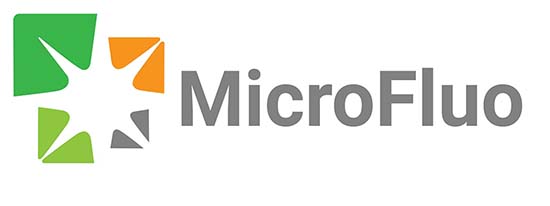
 • Photos et vidéos Instagram_1.png)
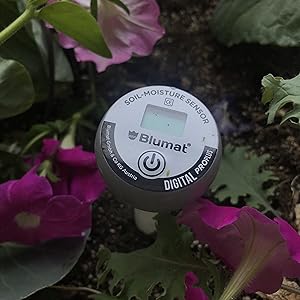
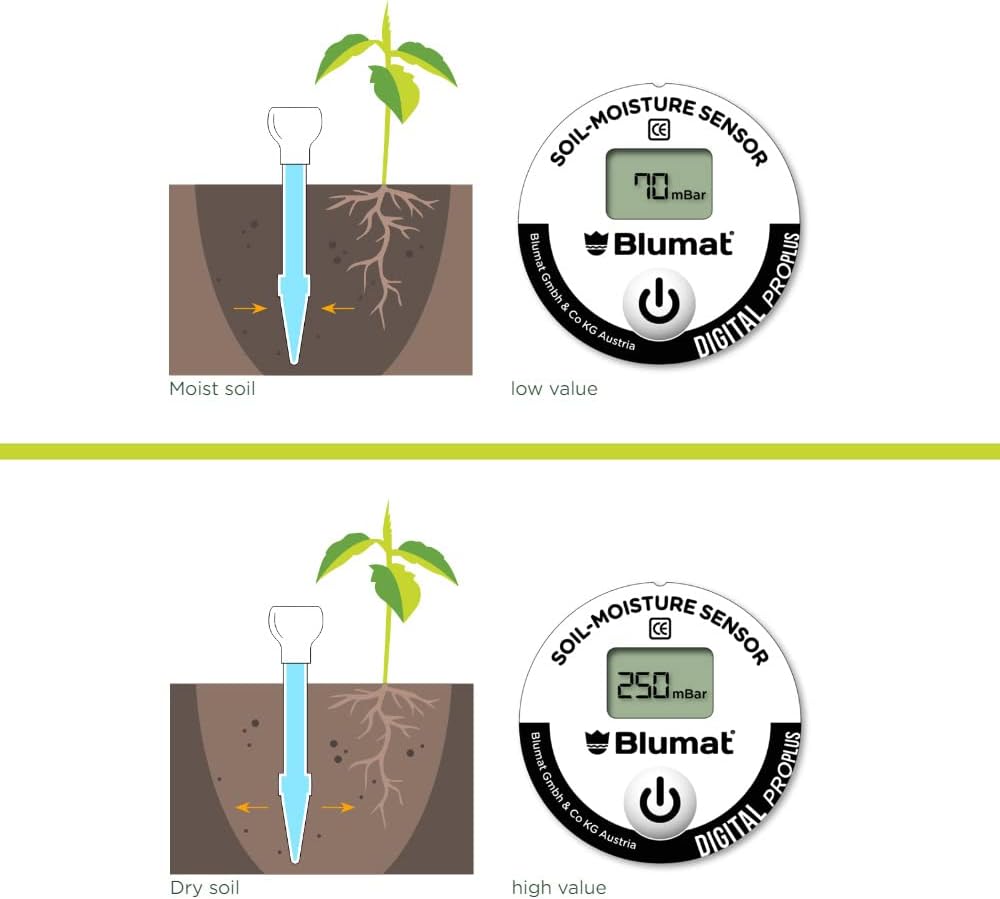

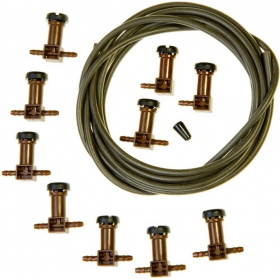



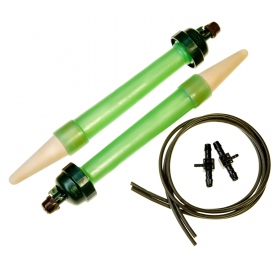

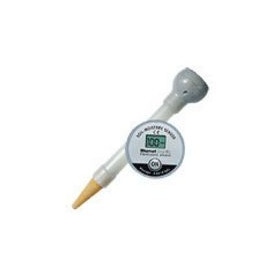
Comments (0)